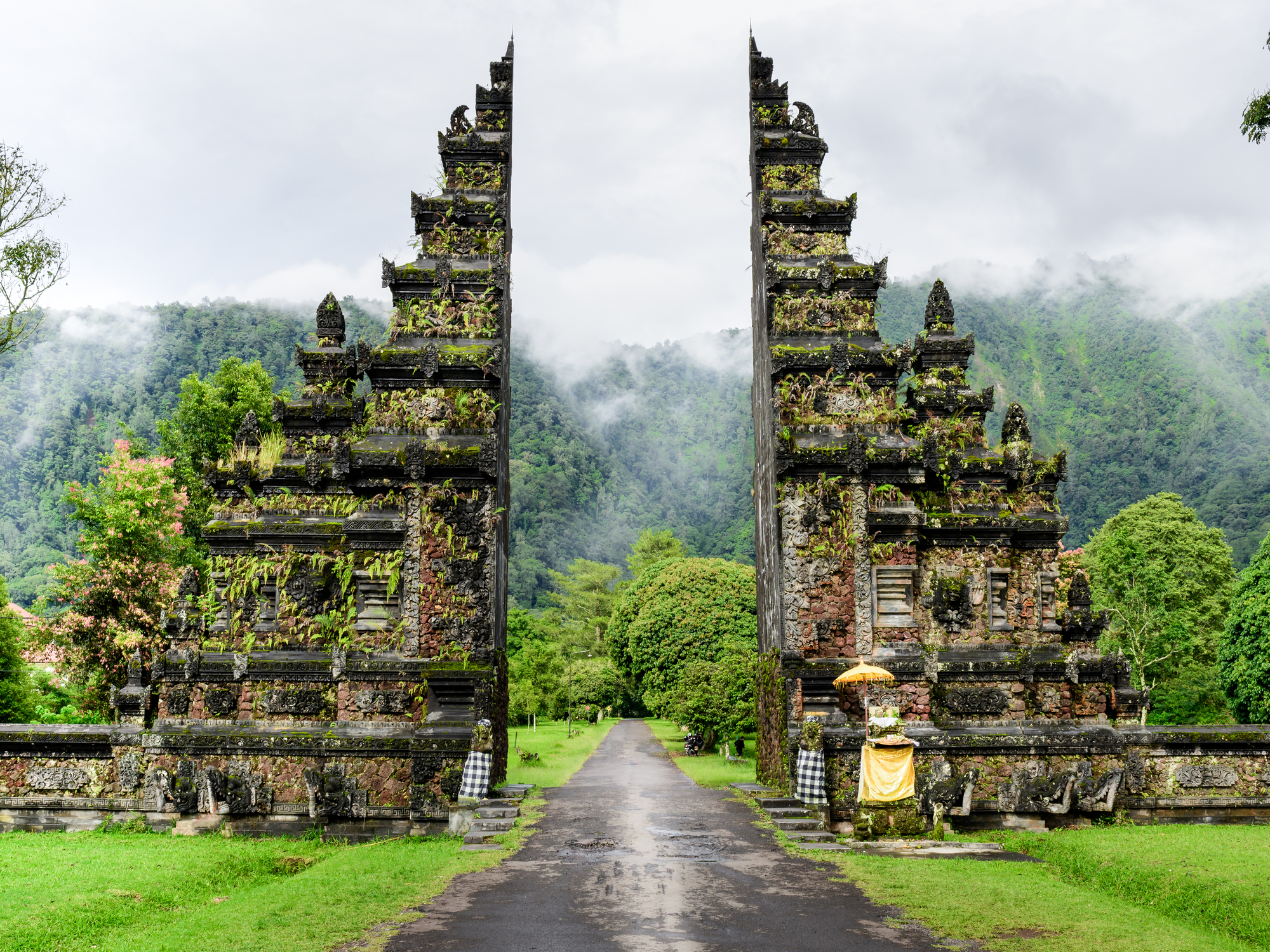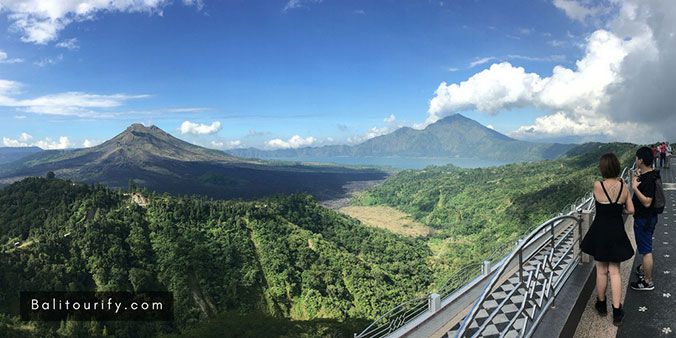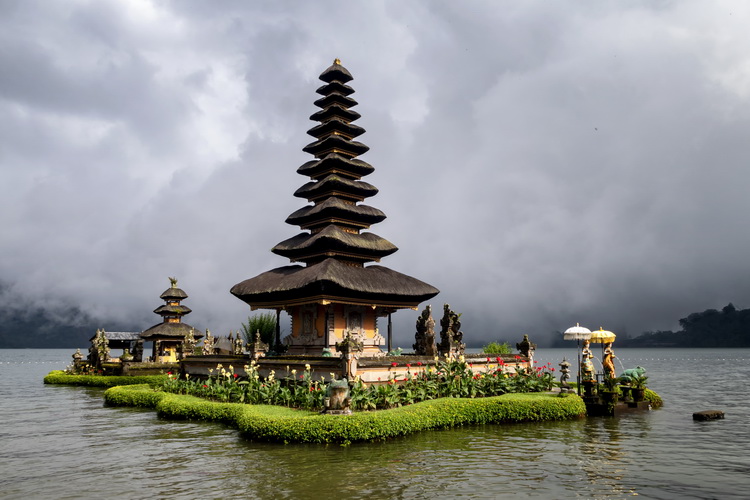
Important Date
Contact Us
Email: icticp2017@gmail.com.
TOURIST PLACES
Bali is a province of Indonesia and the westernmost of the Lesser Sunda Islands. East of Java and west of Lombok, the province includes the island of Bali and a few smaller offshore islands, notably Nusa Penida, Nusa Lembongan, and Nusa Ceningan to the southeast. The provincial capital, Denpasar is the most populous city in the Lesser Sunda Islands and the second-largest, after Makassar, in Eastern Indonesia. The upland town of Ubud in Greater Denpasar is considered Bali's cultural centre. The province is Indonesia's main tourist destination, with a significant rise in tourism since the 1980s. Tourism-related business makes up 80% of its economy.
Bali is the only Hindu-majority province in Indonesia, with 86.9% of the population adhering to Balinese Hinduism. It is renowned for its highly developed arts, including traditional and modern dance, sculpture, painting, leather, metalworking, and music. The Indonesian International Film Festival is held every year in Bali. Other international events that have been held in Bali include Miss World 2013, the 2018 Annual Meetings of the International Monetary Fund and the World Bank Group and the 2022 G20 summit. In March 2017, TripAdvisor named Bali as the world's top destination in its Traveller's Choice award, which it also earned in January 2021.
Bali is part of the Coral Triangle, the area with the highest biodiversity of marine species, especially fish and turtles. In this area alone, over 500 reef-building coral species can be found. For comparison, this is about seven times as many as in the entire Caribbean.Bali is the home of the Subak irrigation system, a UNESCO World Heritage Site. It is also home to a unified confederation of kingdoms composed of 10 traditional royal Balinese houses, each house ruling a specific geographic area. The confederation is the successor of the Bali Kingdom. The royal houses are not recognised by the government of Indonesia; however, they originated before Dutch colonisation.
Tourist Places
| Karangasem Karangasem 10-11 hours The tour visits Besakih Temple, the most sacred temple in Bali. The temple grounds are half way up the slopes of the 3,100m Mount Agung volcano. En route, we visit the ancient courthouse of Kerta Gosa at Klungkung, a beautifully painted relic of the Balinese judicial system, dating back to the 17th century. At lunchtime, we stop at the terraced rice fields of Bukit Jambul, then on to Karangasem via Putung and the village of Tenganan, where we learn about its ancient pre-Hindu customs. We then travel on to the Bat Cave at Kusumba, stopping to watch the traditional methods of salt making along the East Coast on the way. |  |
| Kintamani Volcano Kintamani Volcano 7-8 hours This is one of the most popular tours on the island because it takes in a broad cross-section of Balinese culture and culminates the day with the magnificent view from the edge of the crater at Mount Batur. En route we visit Batubulan to see the famous Barong Dance. The next stop is the village of Celuk, which is famous for its gold and silversmiths. We visit Mas, a centre for woodcarving, then Ubud, a village that has an international reputation for art and painting. Further North we visit the Elephant Cave, followed by a lunch break at Kintamani on Mount Batur before returning to the west via Sebatu and a visit to the Holy Spring Water Temple. |  |
| North Bali, Singaraja and Lake Bratan North Bali, Singaraja and Lake Bratan 10-11 hours This tour travels north to Bedugul and the cool waters of Lake Bratan, a centre lake surrounded by high peaks. En route, we pass through Mengwi, a powerful kingdom dating from the 1800’s and its royal temple, Taman Ayun. We then go over a high mountain pass, where monkeys come down from their perches in the tropical rainforest to linger by the roadside. We drop down to stop at the waterfalls of Gitgit. On the extreme north Coast of Bali, we visit Singaraja, the former capital of Bali from the days of the Dutch colonisation. Lunch break is at Lovina Beach at the edge of the calm waters of the South Java Sea. We return via the sulphur springs and terraced rice fields at Pupuan and cap off a full and fascinating day with a stroll through the Monkey Forest at Kedaton. |  |
| Ngurah Rai International Airport, The Ngurah Rai International Airport is located near Jimbaran, on the isthmus at the southernmost part of the island. Lt. Col. Wisnu Airfield is in northwest Bali. A coastal road circles the island, and three major two-lane arteries cross the central mountains at passes reaching 1,750 m in height (at Penelokan). The Ngurah Rai Bypass is a four-lane expressway that partly encircles Denpasar. Bali has no railway lines. There is a car ferry between Gilimanuk on the west coast of Bali to Ketapang on Java. In December 2010 the Government of Indonesia invited investors to build a new Tanah Ampo Cruise Terminal at Karangasem, Bali with a projected worth of $30 million. On 17 July 2011, the first cruise ship (Sun Princess) anchored about 400 metres (1,300 feet) away from the wharf of Tanah Ampo harbour. The current pier is only 154 metres (505 feet) but will eventually be extended to 300 to 350 metres (980–1,150 feet) to accommodate international cruise ships. The harbour is safer than the existing facility at Benoa and has a scenic backdrop of east Bali mountains and green rice fields. The tender for improvement was subject to delays, and as of July 2013 the situation was unclear with cruise line operators complaining and even refusing to use the existing facility at Tanah Ampo. |
| Trans Sarbagita bus A memorandum of understanding was signed by two ministers, Bali's governor and Indonesian Train Company to build 565 kilometres (351 miles) of railway along the coast around the island. As of July 2015, no details of these proposed railways have been released. In 2019 it was reported in Gapura Bali that Wayan Koster, governor of Bali, "is keen to improve Bali's transportation infrastructure and is considering plans to build an electric rail network across the island". On 16 March 2011 (Tanjung) Benoa port received the "Best Port Welcome 2010" award from London's "Dream World Cruise Destination" magazine. Government plans to expand the role of Benoa port as export-import port to boost Bali's trade and industry sector. In 2013, The Tourism and Creative Economy Ministry advised that 306 cruise liners were scheduled to visit Indonesia, an increase of 43 per cent compared to the previous year. In May 2011, an integrated Area Traffic Control System (ATCS) was implemented to reduce traffic jams at four crossing points: Ngurah Rai statue, Dewa Ruci Kuta crossing, Jimbaran crossing and Sanur crossing. ATCS is an integrated system connecting all traffic lights, CCTVs and other traffic signals with a monitoring office at the police headquarters. It has successfully been implemented in other ASEAN countries and will be implemented at other crossings in Bali. |
| Bali Mandara Toll Road On 21 December 2011, construction started on the Nusa Dua-Benoa-Ngurah Rai International Airport toll road, which will also provide a special lane for motorcycles. This has been done by seven state-owned enterprises led by PT Jasa Marga with 60% of the shares. PT Jasa Marga Bali Tol will construct the 9.91-kilometre-long (6.16-mile) toll road (totally 12.7 kilometres (7.89 miles) with access road). The construction is estimated to cost Rp.2.49 trillion ($273.9 million). The project goes through 2 kilometres (1 mile) of mangrove forest and through 2.3 kilometres (1.4 miles) of beach, both within 5.4 hectares (13 acres) area. The elevated toll road is built over the mangrove forest on 18,000 concrete pillars that occupied two hectares of mangrove forest. This was compensated by the planting of 300,000 mangrove trees along the road. On 21 December 2011, the Dewa Ruci 450-metre (1,480-foot) underpass has also started on the busy Dewa Ruci junction near Bali Kuta Galeria with an estimated cost of Rp136 billion ($14.9 million) from the state budget. On 23 September 2013, the Bali Mandara Toll Road was opened, with the Dewa Ruci Junction (Simpang Siur) underpass being opened previously. To solve chronic traffic problems, the province will also build a toll road connecting Serangan with Tohpati, a toll road connecting Kuta, Denpasar, and Tohpati, and a flyover connecting Kuta and Ngurah Rai Airport. |





